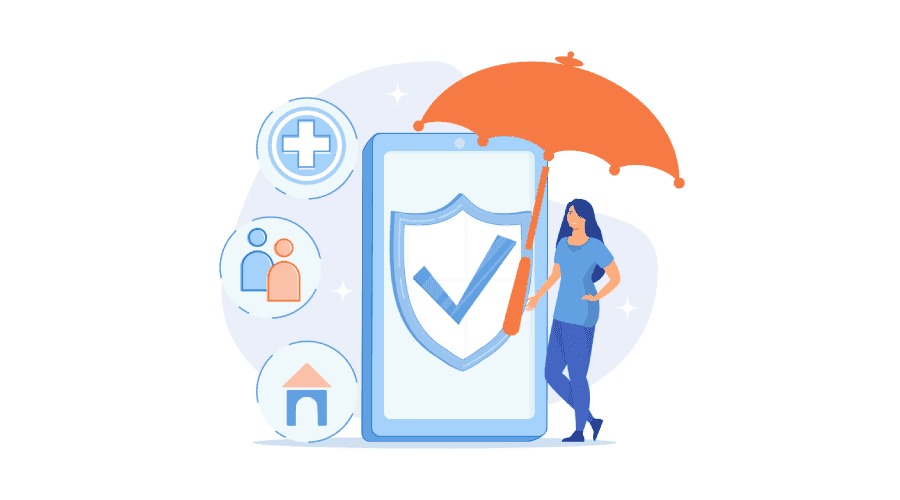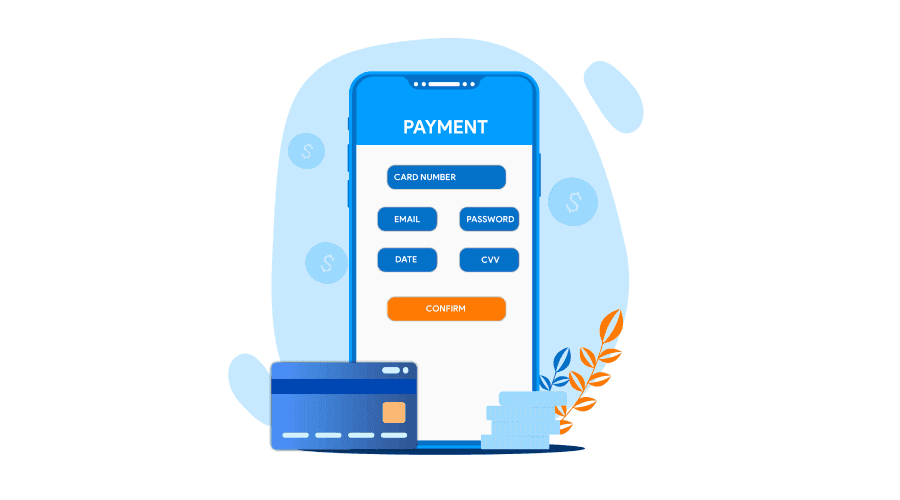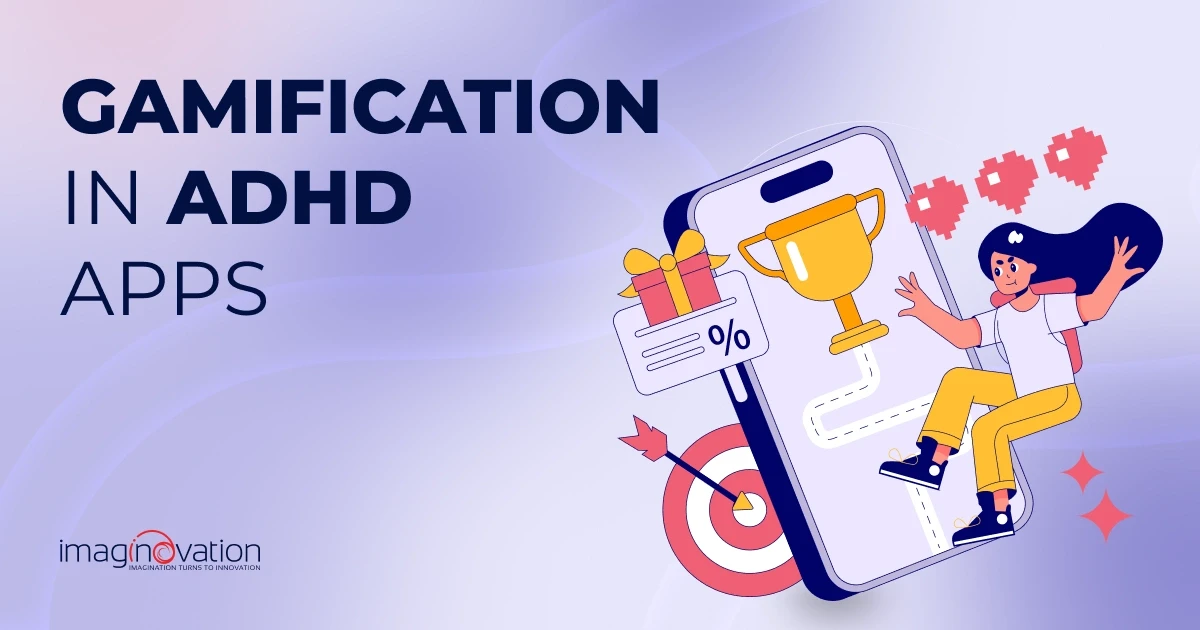Technology is at the core of everything, and the global insurance landscape is no different. Business leaders who strive to stay ahead of the curve constantly innovate and adopt cutting-edge technology. Modern insurance apps can boost client satisfaction, foster strong connections with clients, and propel business growth and success.
Therefore, you must ride the wave of digital transformation and focus on insurance app development to align with the insurance market’s needs. This article will help you gain a holistic view of the many facets of developing an insurance mobile app. Let's dive into how you can scale your business with this step-by-step guide.
Benefits of Building a Mobile App for Insurance Business
The insurance landscape is ever-evolving. According to a popular online statistics portal, the global insurance market was worth almost six trillion U.S. dollars in 2022. Further, data highlights that these figures are set to increase substantially in the coming years. Thus, looking at mobile insurance apps that can help your business become future-ready is vital. Here’s a peek at some perks of developing an app for your insurance company.
Improved User Reach
Many insurance companies find it hard to turn clients into business affiliates. However, with an insurance app powered by cutting-edge technology, one can optimize customer recruitment cycles, freeing up time for insurance agents. With more time, agents can target more clients. Plus, one can leverage semantic marketing to target more customers. Apps can also cater to the tech-savvy millennial demographic, which is a significant market for insurance.
Developers can consider an omnichannel approach to help insurers improve customer engagement. A good example is OP Financial, one of Finland’s largest financial services companies. They added an online chat feature offering customers insurance advice, which increased users by 1,000% within months. When this led to high wait times, the company incorporated an omnichannel strategy, including an AI-based chatbot. The new approach supported live human interaction, reducing customer wait times.
Enhanced Customer Experience
Modern clients prefer researching insurance packages and managing their accounts through mobile devices. The switch to mobile usage is expected to continue rising. Thus, insurance companies must use digital insurance platforms as an ally to satisfy these needs and make customer interactions more meaningful.
Moreover, policyholders prefer accessing their insurance information and managing their policies 24/7 from anywhere, and mobile apps cater to this need, enhancing the customer experience.
Customer Data Insights
The insurance sector can benefit immensely from insights offered by mobile analytics. With technology, insurance companies can gain a bird’s-eye view of clients, and apps can collect data for them.
- Quantitative data: Apps can capture transactional data, including insurance costs, credit scores, bank account details, payment frequencies, and more.
- Qualitative data: They can also collate unquantifiable aspects such as customer motivation and hobbies.
- Descriptive data: Insurance companies can better understand their customers with descriptive data such as driving behavior, property or car ownership, and educational background.
- Identity data: They can obtain client details like name, home/email address, date of birth, phone number, and links to social media profiles.
Convenient Services
A mobile app provides policyholders with easy access to their policies, insurance information, and necessary documents. They can conveniently make payments, submit claims, check coverage details, and access policy information with just a few taps. Self-service features empower customers, save time, reduce paperwork, and provide 24x7 access to their policies.
Seamless Claims Processing
Insurers can streamline services through various app features, saving time and allowing them to focus on acquiring customers. End-users can access claim amounts and make payments via integrated payment gateways within the app. This hassle-free experience leads to happier customers, encouraging them to explore more products.
Data Security and Privacy
Mobile insurance apps handle sensitive information, so data security and privacy are always top priorities. Developers focus on implementing robust security measures to reduce risks and ensure confidentiality and integrity. Encryption and authentication protocols are commonly used, helping to build trust among policyholders.
Personalized Offers
The app’s data collection and insights into customer behaviors and patterns enable insurers to offer personalized offers. This can benefit end-users and help them make quicker decisions regarding product purchases.
Competitive Advantage
Investing in mobile app development demonstrates your commitment to innovation and customer-centricity. It positions you as a forward-thinking industry leader, allowing you to stand out among competitors. Additionally, it can lead to more leads, increased revenues, more policy sales, and a larger base of tech-savvy customers.
Key Types of Insurance Apps (With Examples)
There are various types of insurance apps, but it's essential to focus on the best type for your business. Let’s explore some solutions.

Life Insurance Apps
A life insurance app can streamline routine processes and provide quick access for customers. Here are some advantages of a life insurance app:
- Helping end users choose the right policy
- Filling out the requisite data online
- Reviewing terms and conditions
- Making payments online via a dedicated payment gateway
- Receiving instant notifications
- Accessing 24x7 customer support via a bot
- Automatically calculating the rate of interest
Some popular life insurance apps include Ladder Life, Oscar Health, Haven Life, and myCigna.
Vehicle Insurance Apps
Vehicle insurance apps are especially helpful when an end-user has met with an accident and wants to claim assets. These apps provide coverage for vehicles and allow users to easily access policy documentation, receive reminders about coverage expiration and premium dues, submit and manage claims, and more. Additionally, vehicle insurance apps offer emergency roadside assistance and personalized savings based on good driving practices, car tracking, and driver behavior monitoring. They can help users:
- Take pictures of the accident site and upload them in real-time
- File claims on the spot
- Quickly receive repair estimates
- Access policy documents
- Upload data such as documents, images, videos, and police reports
Some popular vehicle insurance apps include Geico, Progressive, and State Farm.
Property Insurance Apps
Property insurance apps seamlessly assist users in insuring their real estate, artwork, jewelry, and more. End users can easily access policy documents, file claims, and check coverage details on their mobile devices. These apps allow users to:
- Select relevant policies
- File claims at the right time
- Receive regular property maintenance reminders
- Track property for damages
Some popular property insurance apps include Chubb, Farmers, and NGM.
Health Insurance Apps
Health insurance apps facilitate policyholders' access to healthcare services and help manage health-related expenses through mobile devices. These apps feature digital insurance ID cards for easy access during medical appointments, directories of in-network healthcare providers, and coverage verification tools. Users can submit claims digitally, view policy benefits and coverage details, and more. Features include:
- Insurance options across various medical disciplines
- Real-time booking of appointments
- Selecting preferred doctors
- Comparing prices across multiple pharmacies and clinics
- Searching for appropriate health plans
- Accessing documents and completing formalities online
Some popular health insurance apps include myCigna, Religare Health, and Oscar Health.
Travel Insurance Apps
Travel insurance apps offer end users numerous benefits, such as:
- Reducing risks during emergencies
- Reimbursing medical expenses in case of accidents
- Covering unforeseen medical costs
- Filing claims for luggage loss and trip cancellations
- Providing instant cross-border emergency access
Some popular travel insurance apps include Freely, Wapp, and Trip Insurance.
Business Insurance Apps
Business insurance apps help users safeguard multiple business investments. Some benefits include:
- Filing instant claims for fraud or losses (with easy document uploads)
- Selecting the right insurance package based on business size and risk type
- Reducing losses by quickly settling insured events
Some popular business insurance apps include Thimble Insurance, Next Insurance, and Coterie Insurance.
Key Features to Include in an Insurance Mobile App
Mobile insurance apps have a hoard of benefits. With the right feature sets, it can boost efficiency and address your pain points. When developing a robust mobile insurance app, here are some features you must consider.
1. Admin Panel
The admin panel is the first interface the end user interacts with — it serves as the introductory page. Designers and developers must create a clean look with clear call-to-action buttons. A simple, intuitive design enhances the user experience and makes navigation effortless.
2. Access to ID Cards and Policy Details
A mobile insurance app must offer easy access to all policies. The interface should facilitate updating personal information and coverage details within the app, ensuring that policy information remains accurate. In emergencies, the app should allow instant access to digital ID cards, enabling seamless interactions with law enforcement.
3. Quote and Filters
Quotes and filters are essential features in any insurance app. End users can use the quote tab to retrieve data from records, connect with an insurance agent, or directly view policy pricing. Incorporating Big Data can allow the app to pitch discounted prices or additional benefits to customers based on their behavior and preferences.
4. Filing Claims, Processing, and Management
One of the most critical features of a mobile insurance app is the ability to file claims. This feature provides a hassle-free experience for submitting proofs. Users can upload pictures or scan documents using a scanner. Developers should aim to streamline the entire claims process on a single page.
5. Payment Gateway

Establishing a payment gateway is crucial. The app should allow users to make payments via all major providers, such as Visa and MasterCard. Additionally, the app should support automated billing for EMIs or provide a single-click payment process for a seamless user experience.
6. Customer Support
Chatbots can conveniently respond to automated responses. However, such responses won't be helpful when an end user is stranded with a broken vehicle. Thus, it is best to incorporate a Request a Call Back or Connect with a Representative option, where there is an in-app call functionality. The feature can help avert disasters and works as a quick response machinery.
6. Customer Support
While chatbots can handle automated responses, they may not be sufficient in emergencies, such as when an end user is stranded due to a vehicle breakdown. Thus, it’s best to incorporate a "Request a Call Back" or "Connect with a Representative" option, featuring in-app call functionality. This feature can avert disasters and offer quick, responsive support.
7. Notifications and Alerts
End users must stay informed about updates such as payment reminders, policy renewals, and relevant news. The app can facilitate personalized notifications based on user preferences, policy status, and location. These notifications help users take timely action and manage risks more effectively.
8. Document Upload and Storage
Insurance apps should feature easy document upload options, supporting file uploads from local directories and importing from third-party servers.
9. Location-based Services
Incorporating geolocation technology can benefit users by providing location-based services and information relevant to their insurance coverage. This could include alerts about severe weather or natural disasters, along with safety tips and instructions on filing claims. These features enhance engagement and offer valuable assistance during emergencies.
10. Security and Privacy
Ensuring the security and privacy of user data is crucial. Developers should implement robust security measures such as encryption protocols, multi-factor authentication (MFA), and biometric authentication to protect sensitive user information and transactions. Compliance with data protection regulations like HIPAA and GDPR builds trust and confidence in users regarding their data privacy rights.
Step-by-Step Guide to Building an Insurance Mobile App
This step-by-step guide provides a comprehensive blueprint for building an insurance mobile app, covering all critical phases from discovery to development. Follow along to transform your idea into a fully functional app.
Discovery Phase
In the discovery phase one can conduct an in-depth analysis of the overall development process. The development team can gather the requirements for various aspects and create a blueprint for the activities. The stage is apt for creating development milestones, planning features, and creating outlines for the app.
This stage helps set clear expectations of the expected deliverables. The inputs help to develop a comprehensive project plan that resonates with the brand voice and helps the team make informed choices. In this stage, one can examine aspects such as market analysis, cost analysis, and competitor analysis.
Design Phase
The look and feel of the mobile insurance app will be decided in the design phase. The design team can come up with a design prototype that can help adjust the user flows. Moreover, it can help guide the development process and act as an elevator pitch for the investors. The discovery phase typically sets the blueprint, which sets clear expectations of the technical requirements and the overall business idea. Further, the UI/UX design phase can help with the following aspects:
- A UX wireframe
- A working app design that is clickable
- A UI design of the app screens
- A collaborative design file
Development and Testing Phase
In this stage, the design phase is translated into a functional mobile app. The development process follows milestones to ensure that all goals are met within the specified timeframe. It involves both backend and frontend programmers and is supported by quality assurance engineers. The QA team runs a series of tests to remove any potential vulnerabilities in the user interfaces. Moreover, the app must match the overall security and stability standards.
Deployment and Maintenance Phase
Launching the app on the Apple App Store and Google Play is essential. It's crucial to prioritize user feedback and address complaints and suggestions to improve the app continuously.
Wrapping Up
Software solutions can greatly benefit insurance providers and end users. Digital platforms improve operational efficiency, reduce costs, and enhance customer satisfaction. A mobile insurance app offers a competitive advantage by expanding the user base and improving business efficiency. Business leaders should incorporate technology trends like AI, big data, blockchain, and IoT to offer enhanced services to their customer base. Now is the time to embrace change and achieve phenomenal results.
Develop Your Next Insurance Mobile App with Imaginovation
Are you ready to achieve game-changing results with a high-tech insurance mobile app? Our tech-savvy team can develop robust mobile app solutions tailored to your business needs.
We are an award-winning web and mobile app development company in Raleigh with extensive experience developing cutting-edge digital solutions that give you a competitive edge.
Ready to build an app, but not sure where to start?
We've got you covered. Click the button below to get started.





